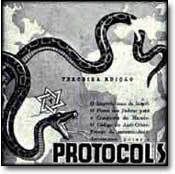For more than a decade, Iran has been doggedly accused without evidence of developing nuclear weapons. The Islamic Republic is relentlessly portrayed by the Western media as a threat to the security of Israel and of the Western World.
In a bitter irony, the assessment of America’s Intelligence Community concerning Iran’s alleged nuclear weapons capabilities refutes the barrage of media disinformation as well as the bellicose statements emanating from the White House. The 2007 National Intelligence Estimate (NIE): “judges with high confidence that in fall 2003, Tehran halted its nuclear weapons program.” (2007 National Intelligence Estimate Iran: Nuclear Intentions and Capabilities; November 2007, See also Office of the Director of National Intelligence (ODNI))
In February 2011, The Director of National Intelligence James R. Clapper (image right) – while presenting the 2011 National Intelligence Estimate (NIE) to the Senate Select Committee on Intelligence – intimated -with some hesitation – that the Islamic Republic was not seeking to develop nuclear weapons capabilities: “we do not know if Iran will eventually decide to build nuclear weapons.”
The 2011 NIE largely confirms the findings undertaken by the US intelligence community in the 2007 NIE, which remains, according to The New York Times, “the consensus view of America’s 16 intelligence agencies.”
Post 9/11 pre-emptive nuclear war doctrine
First formulated in the Bush administration’s 2002 ‘Nuclear Posture Review’, the pre-emptive nuclear war doctrine -integrated into the Global War on Terrorism – started to take shape in the immediate wake of the war on Iraq. A pre-emptive‘defensive’ nuclear attack on Iran using tactical nuclear weapons was envisaged to annihilate the Islamic Republic’s non-existent nuclear weapons program.
So-called ‘mini nukes’ were identified as the ‘ideal weapon’ to conduct a pre-emptive nuclear attack.
In 2003, the mini nukes, consisting of bunker-buster bombs with nuclear warheads, were re-categorized by the US Senate as bona fide conventional weapons. The new definition of a nuclear warhead has blurred the distinction between conventional and nuclear weapons.
Senator Edward Kennedy, at the time, accused the Bush Administration for having developed “a generation of more useable nuclear weapons.”
Through a propaganda campaign which enlisted the support of‘authoritative’ nuclear scientists, the mini-nukes were upheld as an instrument of peace rather than war.
“Administration officials argue that low-yield nuclear weapons are needed as a credible deterrent against rogue states [Iran, North Korea]. Their logic is that existing nuclear weapons are too destructive to be used except in a full-scale nuclear war. Potential enemies realize this, thus they do not consider the threat of nuclear retaliation to be credible. However, low-yield nuclear weapons are less destructive, thus might conceivably be used. That would make them more effective as a deterrent.”(Opponents Surprised By Elimination of Nuke Research Funds, Defense News, November 29, 2004)In an utterly twisted piece of logic, nuclear weapons are presented as a means to building peace and preventing ‘collateral damage’. The Pentagon had intimated, in this regard, that the mini-nukes are ‘harmless to civilians’ because the explosions ‘take place underground’. Each of these mini-nukes, nonetheless, constitutes – in terms of explosion and potential radioactive fallout – a significant fraction of the atom bomb dropped on Hiroshima in 1945. More


![[9_10_s22.jpg]](https://blogger.googleusercontent.com/img/b/R29vZ2xl/AVvXsEjTXnQay9wzz0E6nVHrVhaHKoq_zYXDqZjijHlNDQzj90MZzInrCuVX4ciFYCiBfZ7lhlgr2bBhhnl7ddWbhdih5JbXjQYbA605TNyiq046bQqjG2A4S-nHTmh1VBTQSG6tmc23wq47QQ/s1600/9_10_s22.jpg)




2 comments:
Just look at what a couple of mini-nukes did to the WTC Twins.
"Just look at what a couple of mini-nukes did to the WTC Twins."
Those were placed underground, if they exploded overground, New York and surroundings would have been wiped off the map.
Post a Comment